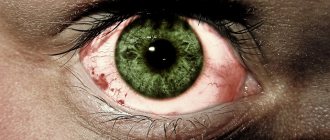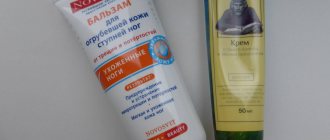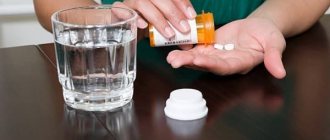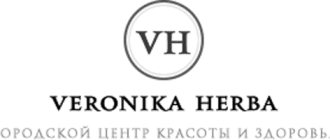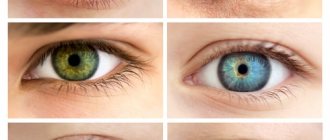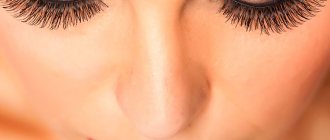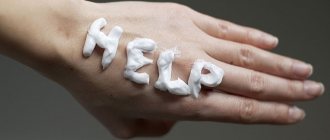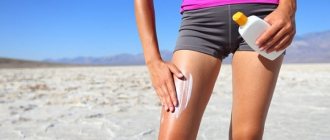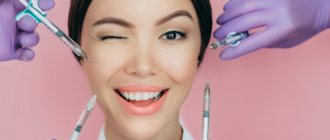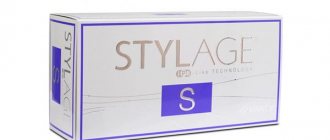People with refractive errors who wear contact lenses often face the question of which eye drops to choose that would help cope with dry eye syndrome, burning and itching. Drops that can sufficiently moisturize the surface of the cornea and maintain this sensation for a long time contain an active component such as hyaluronic acid.
Such unpleasant phenomena as dry eye syndrome, burning, itching, redness, which often accompany daily wearing of contact lenses, can be easily treated with the help of special eye drops with the active component - hyaluronic acid. Eye drops with hyaluronic acid, like tears, envelop the cornea and maintain hydration for a long time, and also fight the burning sensation. Hyaluronic acid, which is capable of restoring dead cells, nourishes the cornea with moisture and retains it not for 5 minutes, like some other drops that do not have this component, but consolidates the effect for a long period.
Which moisturizing eye drops to buy that contain hyaluronic acid, and most importantly - where? Our online store has a large selection of drops that take care of the condition of your visual organs. You can order contact lenses, solutions, drops and accessories for delivery to your region here.
Pros and cons of using
There are a lot of positive aspects to using. Firstly, the drops have an almost natural composition, since hyaluronic acid is synthesized by our body and is also present in the eyeball. Secondly, the drops moisturize and lubricate the cornea at the same time. Thirdly, hyaluronic drops have an immediate effect, that is, they relieve irritation and dryness.
The only disadvantages of using hyaluronic drops are contraindications. Such drops have practically no restrictions on their use, but nevertheless, drugs of this group are not recommended for pregnant women and nursing women without consulting an ophthalmologist. Also, hyaluronic drops should not be used by people who are hypersensitive to the active component.
Contraindications for use
Among all other categories of ophthalmic drugs, moisturizing drops have the fewest contraindications.
Stay up to date! However, they are not prescribed in cases of individual intolerance to the components of the drugs or in case of hypersensitivity to them.
And also, if you are prone to allergic reactions , some moisturizing solutions can cause a negative reaction in the body, so if you notice the first symptoms of an allergy (itching, irritation and redness of the conjunctiva), you should discard the drops and choose an alternative.
"Oxial"
Eye drops with hyaluronic acid "Oxial" were created by the popular ophthalmological company Bausch + Lomb. The composition includes the following components:
- hyaluronic acid moisturizing;
- sodium chloride;
- boric acid;
- magnesium chloride, calcium, potassium.
To use Oksial, you do not have to suffer from dry eye syndrome, although they cope with this ailment thanks to their moisturizing formula quickly and painlessly. The scope of application is quite wide, from burning and itching after prolonged visual stress, to discomfort after being in an air-conditioned room - Oxyal will cope with the tasks of: a) refreshing the look, b) moisturizing the cornea, c) making it easier to wear contact lenses. Cost - approximately 710 rubles per 10 ml.*
How moisturizing eye drops work
Moisturizing ophthalmic solutions perform several functions at once, including:
- moisturizing the cornea;
- thickening of the protective mucin (tear) layer;
- increasing the viscosity characteristics of tear fluid;
- formation and restoration of the tear film.
Many drugs are identical in composition or close to natural tear fluid, so they not only do not cause discomfort, but also do not affect the refraction of light.
Indirectly, such drugs can even serve as a prophylactic against cataracts, glaucoma and less serious diseases, as they have keratoprotective (protective) properties, neutralizing the impact of negative external factors on the visual organs.
"Hilo chest of drawers"
Hylo-chest moisturizing drops contain: moisturizing hyaluronic acid, citric acid, sorbitol and distilled water. They are used in the postoperative period, that is, after surgical intervention in the visual organ, for example, after replacing the lens. However, they can also be used to maintain corneal comfort while wearing contact vision correction devices.
Directions for use: 1-2 drops in each eye as needed. An overdose of the drug is impossible. If you are currently carrying a child or breastfeeding, drops with hyaluronic acid are contraindicated in the same way as for those who have a reaction to this component. 10 ml of Hilo-Komod is enough for 300 uses - a very economical consumption for 630 rubles.
How often should I use moisturizing drops?
Each manufacturer includes detailed instructions with recommendations for use with the bottle of eye drops. Before first use, you should carefully read these instructions. You should also take into account the individual recommendations given to you by your ophthalmologist.
In some cases, the frequency of use of eye moisturizing drops is determined by the extent of need.
That is, they can be instilled as often as the need for eye hydration arises.
"Hilomax-Chest"
Moisturizing hyaluronic drops “Hilomax-Komod” contain an even higher content of hyaluronic acid than in “Hilo-Komod”, which indicates their effectiveness. They are used to treat symptoms of “dry eye”, from visual fatigue after prolonged work with gadgets or text, as well as to care for the cornea while wearing contact lenses. The scope of use of the drug is wide, because it can moisturize the eyes both in hot or windy weather and in an air-conditioned room. Are your eyes red, itchy, and do you feel like your eyes are covered in a film? To get rid of these ailments, you can use Hilomax-Chest. A minute after use, the symptoms will disappear.
The 10 ml bottle is used economically and is convenient to carry even in your pocket or the smallest handbag. The cost on the MagazinLinz.ru website is 720 rubles.
What are drops that eliminate dry eyes made of?
Almost all preparations that moisturize the mucous membrane include the following four components:
- povidone;
- purified water;
- glycerol;
- sodium salt of hyaluronic acid.
Hyaluronic acid perfectly connects water molecules and binds them to each other. As a result, a homogeneous hydrophilic film appears on the organs of vision, which fully moisturizes them. The film helps to prolong the comfortable wearing of lenses and qualitatively protects the eyes from the unwanted influence of environmental factors.
Doctors have long used glycerin as an affordable and effective emollient and lubricant. It is the main ingredient in many creams, ointments and even drops designed to moisturize and eliminate irritation from mucous membranes and skin. Glycerin is also characterized by excellent antiseptic qualities.
The viscosity of eye drops is increased by povidone. As a result, the effect of using the drug lasts longer. In addition, this increases hydration.
In addition to these basic components, eye drops are enriched with natural or synthetic additives, microelements and vitamins. Before purchasing this or that drug, you need to familiarize yourself with its composition. It is possible that it contains substances that are contraindicated for some reason.
Adria Relax
Are you interested in a budget option for high-quality moisturizing of the cornea using hyaluronic acid, which has been actively used in medicine and cosmetology for the last decades? Then this is Adria Relax from South Korean ]Interojo[/anchor].
The drops contain hyaluronic and succinic acids. Hyaluronic acid perfectly moisturizes, and amber one protects the retina from natural deposits on the surface. “Adria Relax” is necessary for those who actively work with text or electronic documents and whose eyes experience daily visual stress. Remember your feelings when you stared at a computer monitor for several hours - blurred vision, burning and even itching. Drop 1-2 drops into each eye, and then blink: your vision will clear, the cornea will moisturize, the burning sensation will subside, and the itching will stop. The price of drops in the Lens Store catalog is 150 rubles excluding delivery.
Contraindications and side effects
In the following cases, it is better to temporarily stop using moisturizing drops or additionally consult an ophthalmologist:
- weak blood vessels in the eyes;
- increased intraocular pressure;
- infectious diseases of the whole body (colds, flu);
- bronchial asthma;
- pregnancy;
- blood clotting disorders.
Moisturizing drops can relieve signs of fatigue in the eyes - dryness, irritation, burning, but you should not rely on these remedies constantly. The simplest requirements for occupational hygiene and other recommendations from specialists will allow you to forget about discomfort and dry eyes for a long time.
High Fresh+
Another option for moisturizing drops with hyaluronic acid is High Fresh+. Multifunctional, like the previous options, “High Fresh Plus” is designed to control eye moisture. It is effective to use these drops for discomfort while wearing contact products, both optical and decorative. You can bury the lenses both when the lenses are already on your eyes, and when you are just about to put them on. It is important not to allow the bottle to come into contact with the conjunctiva, as this leads to the transmission of germs. The cost of funds is minimal. 15 ml drops will last you a long time.
Inexpensive drops to relieve dry eyes
The budget cost of a product does not always indicate its low quality. The basic components used to create moisturizing drops really do not cost much, but they guarantee an excellent effect. The final cost of the drug is influenced by the “promotion” of the brand, the final composition of the drug and the trade markup. It is best to buy such products in large online stores that sell ophthalmological products. Such virtual supermarkets always have a large selection of medications for visual health and the necessary products for the use of contact lenses.
VizoTeque Giasol
VizoTeque Giasol is an effective care product that is essential for contact lens wearers. Daily daytime or prolonged wearing of contact vision correction products requires more than just basic cleansing care. Natural wetting of the eye is not enough when using optics, therefore, in order to prevent the lens from drying out and causing discomfort, it is necessary to use drops for the appropriate purpose. The best component for hydrating the eye is hyaluronic acid, which has the amazing property of retaining moisture in the cells. It is not without reason that hyaluronic acid is used to care for facial skin, which it fills with vital moisture and returns it to its former freshness.
VizoTeque Giasol drops contain the presented component, as well as hypromellose, which has a bactericidal effect, that is, it rids the visual organ of bacteria and germs, which, along with hydration, is important when you use contact lenses. The volume of the bottle is 15 ml, and this only at first glance seems small, in fact it is enough for at least 500 drops.
Solutions to relieve fatigue
When standing in front of a monitor for a long time, human eyes are faced with a problem such as fatigue. To get rid of it, you need to use special drops. Among the most effective are the following:
- "Ophtolik" is a special preparation used when using contact lenses. It relieves dryness and the feeling of sand, eliminates the effect of cutting, relieves pain during blinking;
- “Blink” - can be presented in the form of a solution for contact optics and as a means for caring for a dried out cornea;
- “Thealoz” is a substance created to thicken and lubricate the mucous membrane for the purpose of its regeneration.
Any of these or other products should be purchased only after consultation with a treating specialist.
Non-injection biorevitalization: reviews
The administration of medicinal substances can also be carried out using a non-injection method - by pulsed iontophoresis. The fact is that the permeability of the skin for molecules of large molecular weight (hyaluronic acid, amino acids, vitamins) is minimal, and in order to somehow increase it, pulsed discharges of weak electric current are used. A biorevitalizant solution is first applied to the skin. The procedure lasts about 45 minutes. The course consists of 6-8 procedures over 2 weeks. A repeat course is carried out after half a year.
Reviews for non-injection biorevitalization are mostly negative, which is due to the low efficiency of the method and the inability to introduce therapeutically effective concentrations of active substances into the skin. On the other hand, this technique reduces the risk of developing an infection and also eliminates the possibility of scars appearing at the site of skin punctures with a needle, which happens in patients with a tendency to ankylosis.
Before the first procedure, a microdermabrasion session must be performed, or one of the special enzyme masks must be applied. This will remove superficial dead skin cells and increase skin permeability to medicinal components. We hope that our article on the topic: Biorevitalization of the face before and after, effect, reviews – turned out to be useful to you!
Sources:
1. Add. professional
, 2. Personal experience of clinical application, 3. National Library of Medicine (USA), 4. The National Center for Biotechnology Information (USA), 5. “Aesthetic mesotherapy” (Tochinova N.A.).
Biorevitalization technique –
There are several injection techniques - nappage, papules, tubercles, as well as the linear-retrograde technique.
If all of them are used in mesotherapy, then when carrying out biorevitalization - everything except the “nappage” technique, which is associated with the inability of this technique to achieve deposition of the drug in the dermis. Before the biorevitalization procedure, superficial anesthesia of the skin is required using gels and creams containing from 5 to 12% of the anesthetic lidocaine. The cream is applied to the face for 15-20 minutes (under the film).
Papules (superficial or medium) –
This technique involves injections into the dermal layer of the skin, in such a way that at the site of each injection a “papule” will form, which looks like an elevation above the surface of the skin (Fig. 5). The size of the papules will depend on the volume of drug removed at each injection point. Papules can be small (micropapules), having a diameter of 1-2 mm, in which case injections are performed into the upper layers of the dermis. Each injection produces a volume of the drug of about 0.01-0.02 ml, the distance between papules is about 0.3 to 0.5 cm. Micropapules are usually made in areas with thin skin, for example, in the periorbital zone.
In areas with dense skin, papules are made of medium size - 3-4 mm in diameter, injecting 0.03-0.04 ml of the drug with each injection. The needle will penetrate into slightly deeper layers of the dermis, and the distance between papules should be about 1.5 cm. It should be noted that the larger the papules, the slower they will resolve. Usually papules disappear within 3 days, and in rare cases – up to 5-7 days. But if the doctor made medium-sized papules using a drug with partially stabilized hyaluronic acid (doctor’s mistake), then we can sympathize with you, because they will dissolve in about 3 weeks.
Superficial papules: video
Technique “tubercles” –
This technique has a big advantage, because... after it, the skin at the injection sites is practically invisible, and only traces of needle injections are visible. If with the “papules” technique injections are made with a needle placed at an angle of 15 degrees to the surface of the skin, and thus a drug depot is created in the upper or middle layers of the dermis, then with the “tubercles” technique - injections are made with a 4 mm needle at 45 degrees in the skin surface . Thus, the drug depot is created in the deeper layers of the dermis (at a depth of about 3 mm).
The distance between injections is 1.0 on the face, on the neck it is usually 1.5 cm. The disadvantage of this technique is that it is more difficult to control the volume of drug removal at each point.
Linear-retrograde technique –
This technique came from contouring, and most mesotherapists do not like it, because... technically it is the most difficult. However, it is also the most effective, and the same technique is also used for bioreinforcement of the face. If for previous techniques 4 mm needles are used, here they are 12-13 mm long. After injection, the needle is given a horizontal position, and it advances in the middle layers of the dermis parallel to the surface of the skin for its entire length. The drug is administered by retrograde movement of the needle backwards.
This technique is successfully used in the middle and lower thirds of the face - in the area of the cheekbones, cheeks, chin, corners of the mouth, facial contours (strictly along massage lines), in the neck area, and also around the eyes. It allows you to reduce the number of needle injections several times, thereby reducing the rehabilitation period. Advancing the needle 13 mm into the dermis leads to more pronounced subdermal damage (than when using 4 mm needles), which means tissue regeneration will be more active. This means that collagen synthesis will increase not only due to the introduction of active substances, but also in response to damage.
Linear-retrograde technique: video
Important: the biorevitalization procedure itself will take about 15-20 minutes. After the procedure, the skin is treated with a chlorhexidine solution. However, the indicated time does not take into account the lymphatic drainage vascular injection of the face and collar area, as well as the 15-20 minutes required to apply a special mask to the face, which will help minimize the visibility of needle injection marks and relieve redness.
Biorevitalization: price for 1 procedure
How much biorevitalization of the face and neck costs will depend on the cost of the chosen drug, as well as the amount of the clinic’s markup. In most clinics the markup is +150-200% of the cost of the drug. Private cosmetologists usually have a markup of +100%. For the biorevitalization technique, the cost of 1 procedure in mid-price clinics will be (for 2022) –
| Biorevitalization procedure: price | rub. |
| Restylane Vital – 1.0 ml Restylane Vital (injector) – 2.0 ml | 11 000 17 000 |
| Restylane Vital Light – 1.0 ml Restylane Vital Light (injector) – 2.0 ml | 10 000 16 000 |
| Juvederm Hydrate – 1.0 ml | 9000 |
| IAL-System – 1.1 ml IAL-System ACP – 1.0 ml | 9500 10 500 |
| NucleoSpire DNA-RNA line – 2.0 ml | 8000 |
| “HyalRepair” line – 1.5 ml | 9000 |
| Meso-Wharton P199 – 1.5 ml | 13 000 |
| Aquashine – 2.0 ml Aquashine BR – 2.0 ml Aquashine BTX – 2.0 ml | 9 500 9 500 11 000 |
The purchase price for cosmetology clinics for Restylane Vital and Vital Light is about 5,000 rubles (for 1.0 ml), for Juvederm Hydrate – 4,000 rubles (for 1.0 ml), for Aquashine – about 3,500 rubles (for 2.0 ml) etc. But you must understand that the cost of the service includes anesthesia, consumables, and the cost of a special regenerating mask, which must be applied to the face after the procedure. Don’t forget about office rent, employee salaries, taxes, reimbursement of specialist training costs, etc.
→ Cost of facial mesotherapy procedures → Cost of hair mesotherapy
Purpose of hyaluronic acid
Why has so much attention been paid to this acid in recent years, what is its peculiarity? Hyaluronic acid is a compound that can attract and retain water molecules. Acid is responsible for the elasticity and viability of body cells, tissue hydrodynamics, and successfully fights pathogenic microorganisms. Scientists discovered this substance relatively recently - in 1930.
Hyaluron is located in the intercellular space. This substance can be in a liquid or gel state. As a liquid, hyaluron is found in saliva, and in gel form - in the vitreous body, intercellular space, and cartilage. Hyaluron can also exist in a solid state: as part of bone tissue.
Hyaluron is widely used for cosmetic (rejuvenation) and medicinal (regeneration) purposes. With its help, you can heal sore joints and rejuvenate the aging facial contour.
Functions in the body:
- connective tissue protection;
- anti-inflammatory effect;
- tissue regeneration;
- hydration.
In the pharmacological industry, two types of polysaccharides (hyaluronic acid) are used - low molecular weight, high molecular weight. Low molecular weight compounds use small polysaccharide molecules, while high molecular weight compounds use large ones. Low molecular weight compounds are used for injections, high molecular weight compounds are used for creams, ointments, drops.
For what reason is there a deficiency of such a useful substance for the body? Many believe that the lack of hyaluron production is associated with the aging of the body. But this is not true. One of the main reasons for insufficient acid production is the negative effects of UV rays. The aggression of ultraviolet radiation negatively affects the vital activity of body cells and damages their structure.
Biorevitalization of the face: reviews from doctors and patients
Over the past 10 years, the composition of drugs for mesotherapy and biorevitalization of the face has changed dramatically, and if earlier it was impossible to achieve express lifting, reducing the depth of wrinkles, and increasing collagen production, now this has become a reality. Of course, mono-preparations of hyaluronic acid can already be considered the last century of cosmetology. They are best used primarily in patients with a fine-wrinkled type of aging under the age of 25-30 years, who do not yet require intensive rejuvenation.
For patients with fine-wrinkle type of aging 30+, in addition to hyaluronic acid, vitamins (especially vitamin C), B vitamins, antioxidants that protect against photoaging, amino acids proline, glycine and lysine are very important to stimulate collagen production, cysteine is to correct hyperpigmentation. Further 40-45+, peptides, nucleotides, and growth factors that stimulate collagen production are added to the above. Remember that it is better not to use HA more than once a month, i.e. you need to combine and alternate different drugs.
An important point - remember that in patients with deformational (edematous) type of aging, the use of HA, especially its high concentrations, will only aggravate swelling and deformation of the face, and increase gravitational ptosis. In such patients, it is very important to carry out capillary mesotherapy in the amount of 4-5 procedures, and to use preparations with nucleotides, peptides, amino acids, and vitamins as biorevitalizants. The use of GC in such patients is possible only in small concentrations of 0.3-0.5% and only at the final stage of treatment.
Let us say right away that there are very few qualified mesotherapists. Most people just want to quickly inject the patient with 1.0-2.0 ml of biorevitalizant and earn money. Almost no one is engaged in activating lymphatic drainage and blood supply to the skin of the face. That is why many patients have negative reviews of biorevitalization. They say it's expensive and the effect doesn't last long.
Bioreparation and biorevitalization: differences
Recently, in advertising of injection procedures for rejuvenation, the terms “bioreparation” and “biorestructuring” can increasingly be found. It’s just that each manufacturing company is trying to differentiate itself from others, and therefore they introduce new and new terms. Essentially, the term bioreparation means “restoration.” In my opinion, speaking objectively, bioremedies include preparations with nucleotides (DNA-RNA complexes), regulatory peptides and growth factors.
